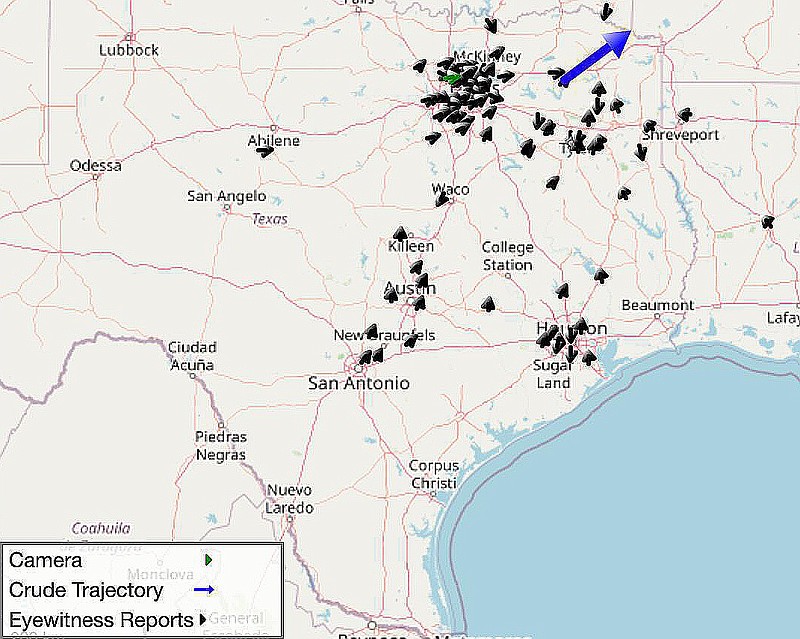TEXARKANA - Did you see it?
That's what many residents of the Texarkana region were asking one another after spotting a large, bright meteor streak across the night sky and disintegrate. Many also reported hearing a boom.
Hundreds of people across the Four States region and beyond noted seeing the fireball about 9 p.m. Sunday. Internet posts show video from a few cameras capturing the event, which lasted only a few seconds.
Regional residents took to social media to report sightings not only in Texarkana, but also at Wright Patman Lake and in Atlanta, Nash and Hooks in Texas, as well as Genoa and Magnolia in Arkansas.
Analysis of reports and videos shows the meteor was first seen 48 miles above Texas Highway 11, between Sulphur Springs and Winnsboro, according to a Facebook post by NASA Meteor Watch.
Moving northeast at 30,000 miles per hour, it traveled 59 miles through the upper atmosphere before fragmenting 27 miles above U.S. Highway 82, east of Avery, Texas.
The fireball was at least as bright as a quarter moon, which translates to something bigger than 6 inches in diameter with a weight of 10 pounds, NASA said. The slow speed, for a meteor, suggests a small piece of an asteroid produced the fireball.
Such events are not rare, but Sunday night's occurred at a convenient time to have a lot of witnesses, said Robert Lunsford with the American Meteor Society. AMS received reports of sightings Sunday from as far away as Southwest Missouri.
Reports of a sound accompanying the fireball indicate it may not have completely burned up before reaching the lower atmosphere, Lunsford said. That means pieces of the meteor may have reached the ground, at which point they would be called meteorites.
Any meteorites would look "totally different from other rocks," something like lava, though they would not be warm to the touch, he said.
The meteor was unrelated to the annual perseid meteor shower, which began this year on July 17 and will continue through Aug. 26, peaking the night of Aug. 11-12.
During the shower, observers can see up to 50 shooting stars per hour coming from the region of the sky where the constellation Perseus appears. They are caused by Earth passing through debris left in space by a comet.

